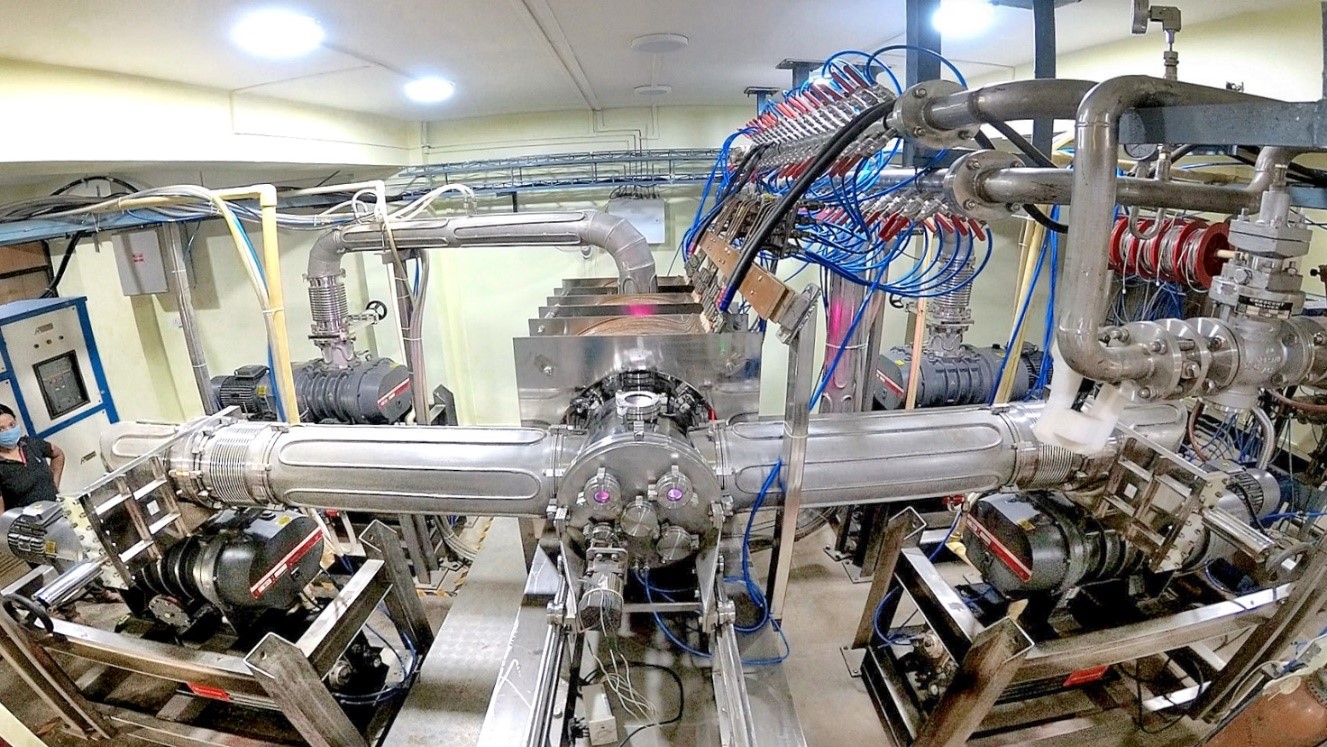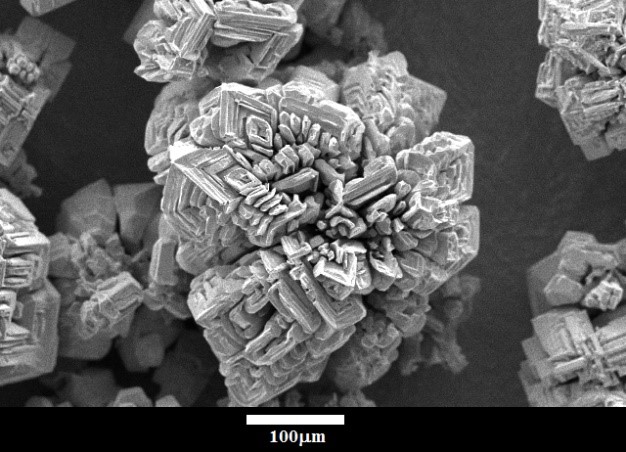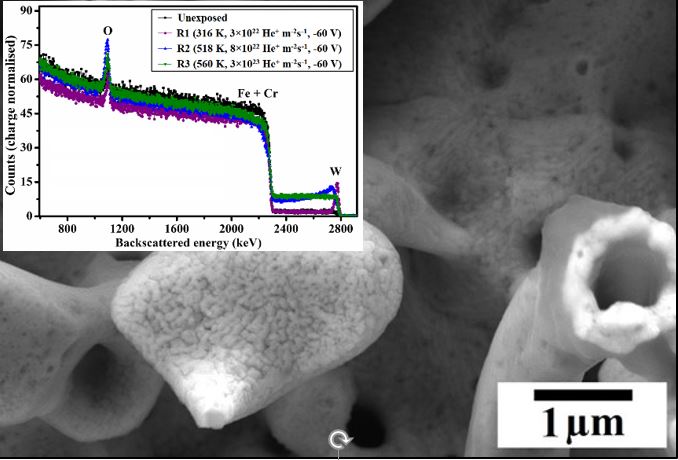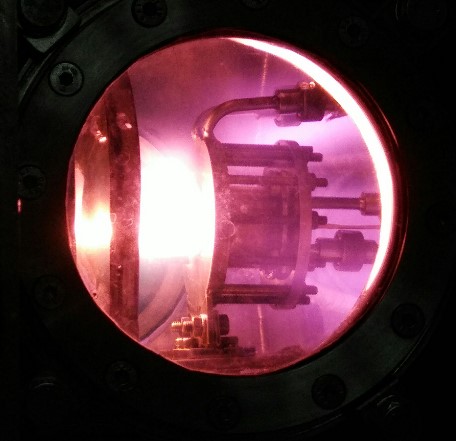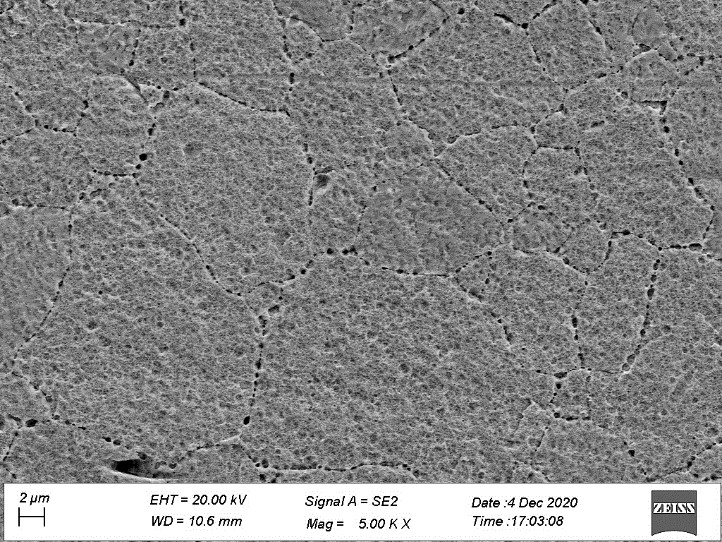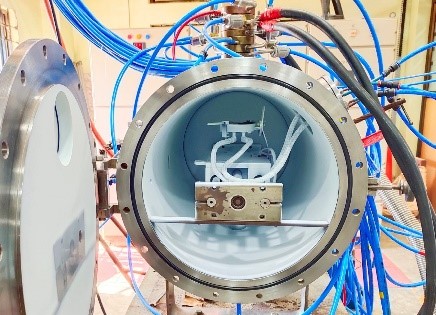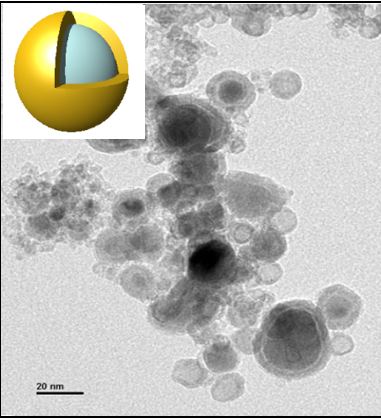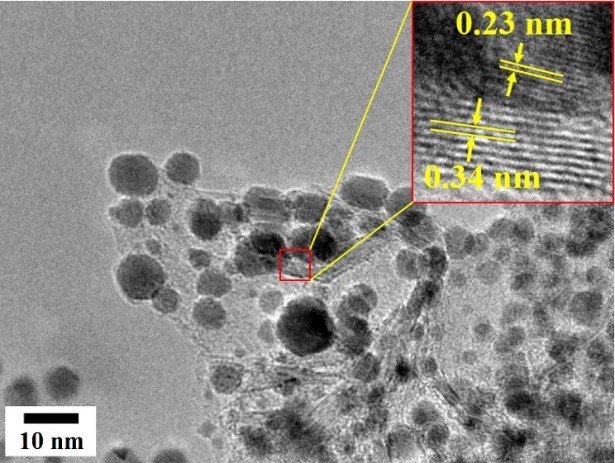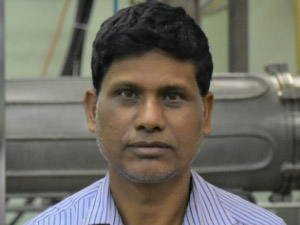
|
||||||||||||||||||||||||||||||
|
||||||||||||||||||||||||||||||
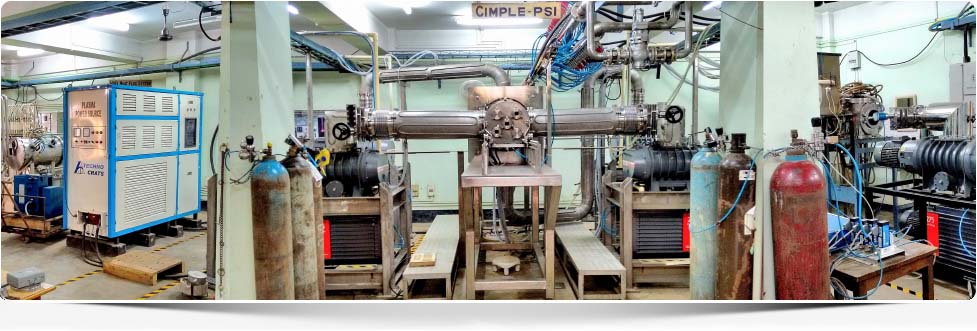 |
||||||||||||||||||||||||||||||
|
CIMPLE-PSI Laboratory |
||||||||||||||||||||||||||||||
|
Overview of the laboratoryI. Controlled plasma fusion relevant plasma surface interaction (PSI) studies:
It is important to understand, whether the proposed plasma facing materials (PFM) will withstand the extreme heat and particle conditions in the divertor region of the ITER/DEMO like future advanced tokamaks. During the D/T reactions, the incident radiation will comprise of steady-state, very high-flux of low-energy ions (T+, D+ and He+) and 14 MeV fusion neutrons, in addition to the transient heat-loads from the edge localized modes (ELM). This laboratory studied the fusion relevant plasma surface interaction (PSI) behaviour of some PFM (tungsten, IN-RAFM steel, W-alloys) under simulated ITER divertor like conditions. CIMPLE-PSI (600 kW, maximum 0.45 Tesla magnetic field) was indigenously developed in between 2012-2018, which is one of the few simulator devices in the world that can reproduce ITER like extreme parameters in terms of the both extreme ion-flux (~1024 m-2s-1) and steady-state heat flux (~5 MWm-2). CPP-IPR High Heat Flux (HHF, 2007-12) device was developed using a segmented arc source, which produced heat-flux equal to that available on the surface of the Sun, where we studied melting of tungsten. Observed tungsten skeletal crystals; similar morphologies were identified before in the Russian T-10 tokamak, for graphite. Current focus is on measuring irradiation resistance of tungsten based multi component alloys. II. Defined and nurturing a common research program for CPP-IPR:
Combining common core expertise in fusion relevant PSI studies, CIMPLE-PSI joined with CPP-IPR Pulsed-Power Technology Laboratory to demonstrate that the dense the plasma focus (DPF) device produces a Heat-Flux Factor (HFF, MWm-2s0.5 ~ 55) similar to the ITER like ELMs, which may be utilized as an ideal test bed, to study the thermal shock irradiation behaviour of tungsten. The synergy of the helium ions on the consequences of the thermal-transients were systematically investigated. This device will be also used to understand the suitability of the multi component alloys as PFM for fusion. III. Plasma assisted controlled synthesis of nanomaterials: of W
Demonstrated plasma synthesis of superparamagnetic carbon encapsulated magnetic nanoparticles for remote drugs delivery, for the first time by any method. Developed a novel plasma technique for very high rate synthesis of certain metal-oxide nanoparticles up to 750 g/h, optimized for environmental and biomedical applications. IV. A proposal to setup Northeast India’s first Ion-Accelerator at CPP-IPR, a 2 MV Tandetron to qualify materials for India’s Fusion Program.
High-energy ions will be utilized to surrogate the process of interaction of fusion neutrons with IN-RAFM steel and W-alloys, for India’s DEMO program.
CIMPLE-PSI
A Tokamak Divertor Simulator Device for Controlled Plasma Fusion Research Relevant Plasma Surface Interaction (PSI) Studies
It is essential to understand in advance, how the plasma in the ITER tokamak with unprecedented ion-flux and heat-flux, will interact with the Divertor region, once this world’s
largest fusion-machine becomes operational in Cadarache, France, in the next couples of years. This laboratory in the northeastern part of India has been engaged in the development
of advanced experimental systems where fusion relevant PSI issues may be studied under simulated Tokamak, Divertor like plasma conditions. CIMPLE-PSI device was indigenously designed
and developed, which can reproduce ITER like ion-flux (~1024 m-2s-1), heat-flux (~5×106 Wm -2) and ion-fluence (~3×1027 m-2),
under steady-state conditions. The device requires about 600 kW power for continuous operation, is pumped down by four sets of roots/rotary vacuum pumps with speed more than 14,000 m3/h. A segmented plasma torch is used to produce a dense,
high velocity plasma jet, which is confined into a collimated plasma beam by an axial magnetic field (maximum 0.45 Tesla) produced with a water-cooled electromagnet.
The CPP-IPR high heat flux (HHF) device is a plasma-assisted controlled heat source, where the plasma jet is confined simply by gas dynamic control and even without a magnetic field. HHF can reproduce an intense, continuous heat-flux similar to that on the surface of the sun (10 MWm-2). Condensation of exotic skeletal and spherulitic micro-crystals of tungsten were observed in this system. Similar highly non-equilibrium dust like morphologies were reported before in the T-10 tokamak, in Russia Helium plasma interaction with W and IN-RAFM Steel
Interaction of high fluence helium plasma with biased tungsten targets, at elevated target temperature (maximum up to 1430 K) in CIMPLE-PSI led to the formation of surface fiber form structures,
also known as W-fuzz, which was observed before in tokamaks and also in other tokamak divertor simulator devices. Bubbles inside the fuzz, which are the precursors for formation of those structures,
were photographed with a 300 kV HRTEM, while diameter depth profile of those bubbles remaining embedded just below the W surface were measured by the technique of grazing incidence small angle x-ray
scattering (GISAXS).
For the first time, this laboratory measured the exposure behavior of IN-RAFM steel under irradiation of high ion-fluence, low temperature helium plasma that also witnessed growth of fiber-form
modified surface morphologies, and surface enrichment with high-Z elements as revealed by the RBS and EDS measurements. Helium bubbles were identified once again inside the fibers, which ruptured
the exposed metal surface to form a highly porous, top layer. An important observation was, the sputtering yield of the steel decreased with the ion-fluence, primarily due to the evolution of the
highly porous, fiber-form surface, and not only due to the surface enrichment with W, as was concluded by the previous experiments
Studies on recrystallization of W
In the ITER tokamak, plasma heat loads may increase the surface temperature of the tungsten divertor beyond 1300˚C in some areas. That will lead to recrystallization,grain growth of the metal,
thus deteriorating its surface properties. In CIMPLE-PSI, we are investigating recrystallization behaviour of tungsten while irradiated by helium ion fluence of 3.6×1027 m-2 and very high target
temperature up to 1866±5 ˚K. A dense, thick (up to 15 micron) layer of W-fuzz was observed, which is gently wiped off to examine the surface underneath. It is seen that large pinholes densely
populate the grain boundaries of the high temperature samples, with maximum size even beyond five hundred nanometers.
This is order of magnitude bigger compared to pinholes observed before in previous recrystallization studies where plasma exposure were carried-out typically under low-sample temperature conditions.
Grain size measurements confirmed retarded recrystallization is effective for these samples, although it was observed before that pinning effect from diffused helium may reduce with increasing size
of the bubbles. During our experiment the annealing occurred during the plasma exposure and not sequentially as in most previous experiments, that may be a reason that retarding effect of helium was
still effective. Helium is likely to have diffused much beyond only few tens of nanometers along the grain boundaries for these high temperature samples that also might have contributed towards
retardation of the recrystallization process.
Plasma assisted bulk production of nanomaterials
Bulk production of metal-oxide nanomaterials:
This laboratory aims to develop thermal plasma assisted novel chemical reactor configurations for bulk synthesis of high-temperature-nanomaterials, without compromising with their particle
characteristics, like the average size, particle size distribution, state of agglomeration, phase composition, etc., for application in water treatment, environmental engineering and in energy.
In a plasma-chemical reactor system developed recently, gas dynamically controlled argon+oxygen plasma streamlines engulf a large metallic plate, from which through oxidation and sublimation processes,
metal oxide nanomaterials (WO3-x, MoO3-x) are produced up to 700 g/h. Controlled oxygen vacancies were introduced in to the moly-oxide nanomaterials during the same one-step plasma process, which was
most appropriate for application in photo-catalytic dye degradation, and cancer treatment by photo thermal therapy.
Size-controlled synthesis of nanomaterials:
Hot plasma-assisted nanomaterial synthesis techniques demonstrate poor control in terms of the average particle size and the size distribution. Using a supersonic thermal plasma jet assisted reactor
configuration, this laboratory demonstrated that finest size controlled particles can be achieved simply by manipulating ambient pressure in the sample collection chamber, for different high-temperature
nanomaterials including ceramics (titanium oxide and nitride, alumina), metals (tungsten) and carbon nanomaterials. Demonstrated
first synthesis of superparamagnetic carbon-encapsulated magnetic nanoparticles
(CEMN, average size=5 nanometer, saturation magnetization= 67 emu/g, coercive-field= 7.4 Oe), for targeted drugs delivery applications.
One step synthesis of nanocomposites:
Demonstrated single-step, fine size-controlled synthesis of nanocomposites, including Ag-C and superparamagnetic iron-oxide-CEMN-SWCNT. The coercivity of the magnetic material was measured as 10 Oe,
saturation magnetization 52 emu g-1, with corresponding average size of just 5.1 nm, which is one of the smallest values reported in the literature. The silver nanoparticles with minimum average size
of just 4.6 nm nucleated anchoring tightly on carbon sheets that could inhibit their aggregation and growth in size, which became more effective as crystallinity of the carbon enhanced further.
People (People involved in the laboratory including collaborators)
PublicationsAwards and RecognitionsAlumni
| ||||||||||||||||||||||||||||||
